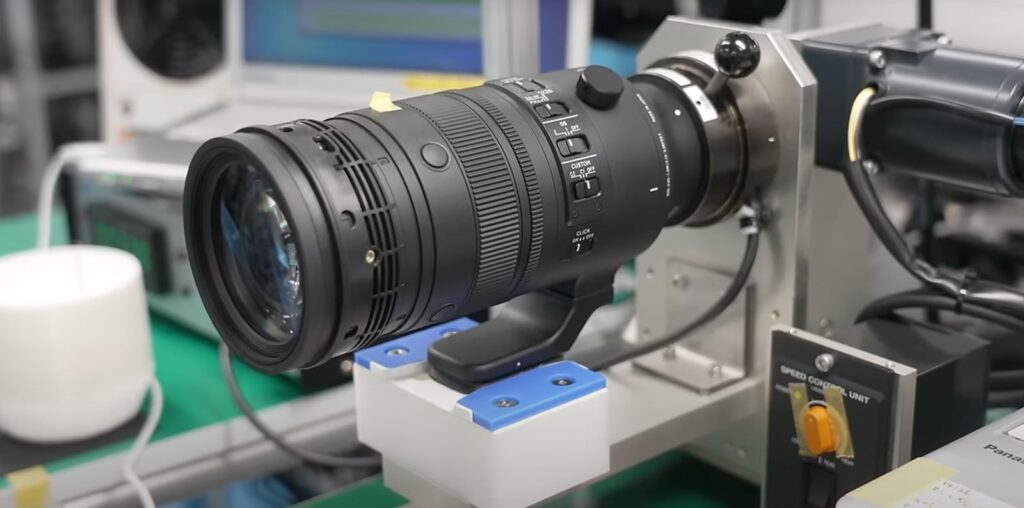A new YouTube video showcases the incredibly detailed process of how Sigma manufactures a 70-200mm zoom lens from start to finish.
A new video from ProcessX shows just how much precision engineering, attention to detail, and even handmade work goes into manufacturing a single Sigma 70-200mm f/2.8 DG DN OS Sport lens. It’s a fascinating look behind the scenes at a process that photographers rarely get to see: how the tools of the trade are created.
After a brief introduction with some ASMR-like factory process sounds, the video begins with a look at crafting the glass elements, the backbone of any good lens. Sigma starts by grinding raw glass materials into their basic shapes. A large hydraulic press grinds each pre-cut circular element into the correct form factor.
From there, the glass elements go through a vigorous polishing process. First, a machine polishes the glass under high-pressure water and sanding. Then the elements are hand-wiped and measured to test for spherical accuracy, the correct behavior of Newton rings–those tree trunk-looking circles that appear when you look through circular glass and scratches. The video shows what this looks like for the front elements, but the process is the same for each lens element.
Once the glass is in its correct shape, it’s hand-checked again for imperfections. The importance of human quality control can’t be understated here. Then, dozens of like-sized elements are placed into a giant array that applies a special coating. Coated glass moves to a bonding process, where convex and concave elements are bonded together, which removes chromatic aberrations. The side edges of the glass are coated in black to prevent internal reflection within the lens itself.
The next step in the process is creating the lens barrel. Each glass element is bonded with metal collars that will interconnect within the lens barrel. Meanwhile, the plastic components of the external and internal construction of the lens are produced. The plastic lens barrel is molded, bonded together, and painted Sigma black. It’s neat to see the small touches like injecting the white paint for words, numbers, and markers into engraved areas on the lens.
Finally, once all the components are ready, the lens is assembled, primarily by hand. Workers snap, screw, and connect the metal, glass, and electronics by hand within the plastic shell. The last step is putting each lens through a series of imaging and durability tests to ensure each copy meets Sigma’s exacting standards.
ProcessX has visited Sigma’s Aizu factory before, including in a video PetaPixel featured last year that shows how Sigma makes a variety of other lenses in its lineup.
Image credits: Featured image is a screenshot from ProcessX’s new Sigma factory video.

